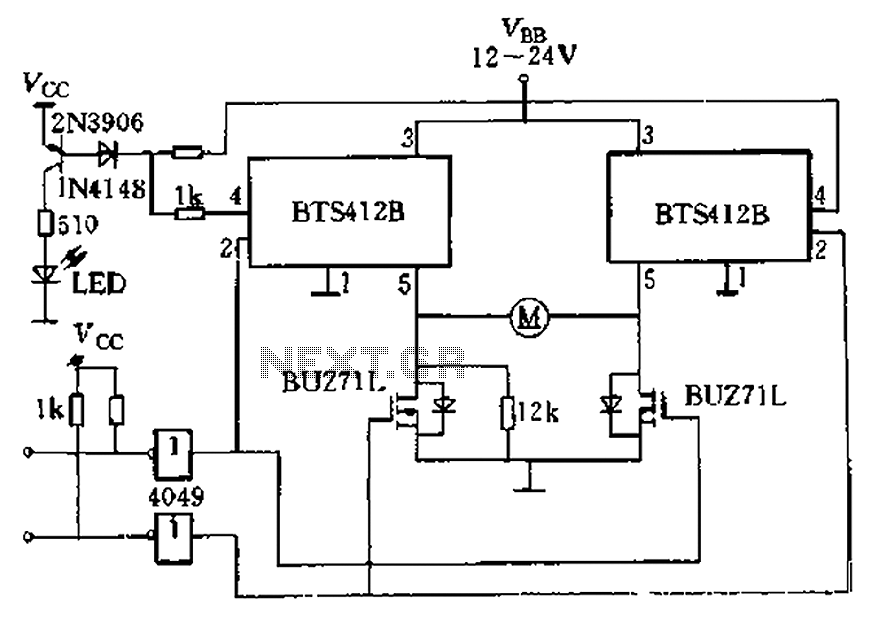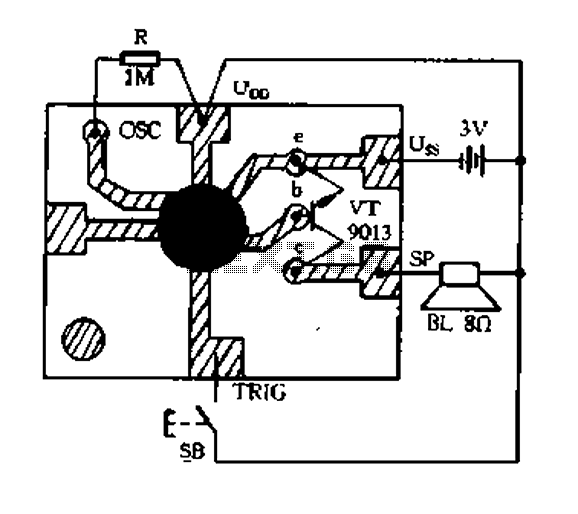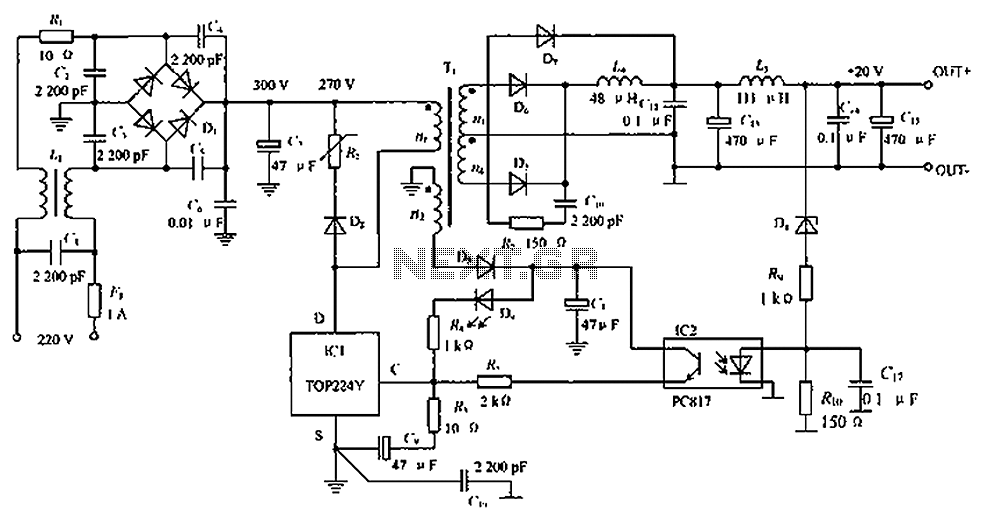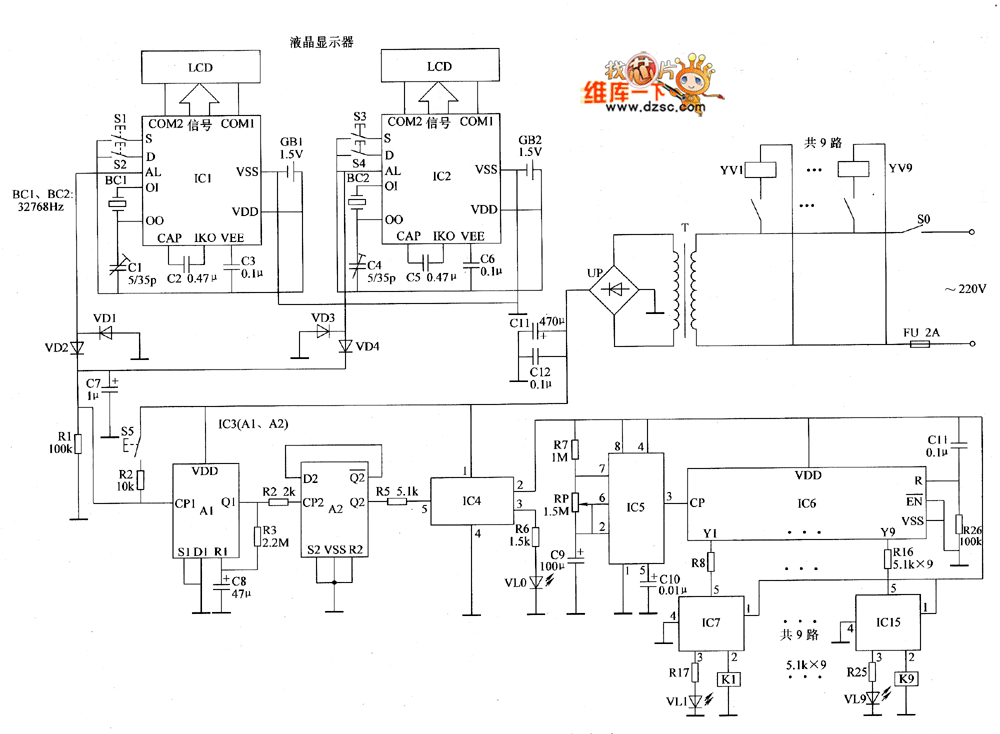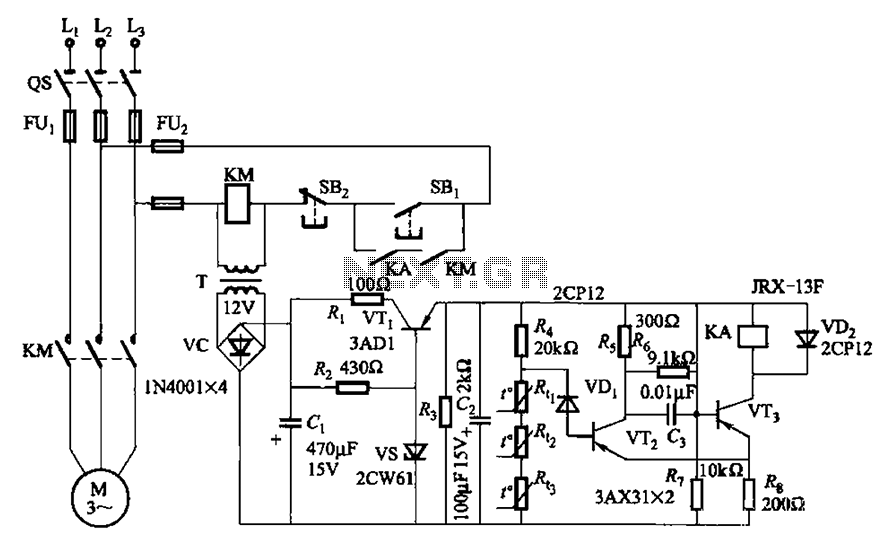
Five sections of the spectrum display circuit
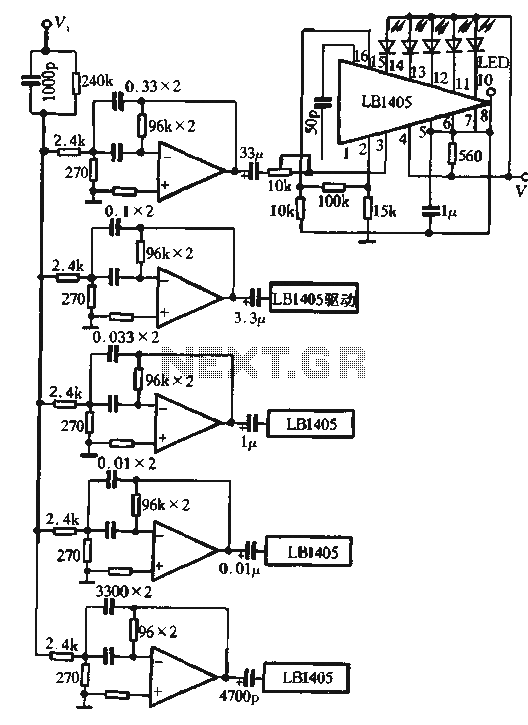
The circuit utilizes the LM324 as a band-pass filter and the LB1405 as a driver for a five-band spectrum display. The selected frequency harmonics are centered at 100 Hz, 330 Hz, 1 kHz, 3.3 kHz, and 10 kHz. The band-pass filter is designed with a gain of 10 (0 dB) across these frequencies. The design calculations for the display driver LB1405 have not been thoroughly completed due to the limited number of bands in the display. An input sensitivity adjustment potentiometer is included for the driver input, allowing for some degree of calibration.
The circuit configuration employs the LM324 operational amplifier, which is a quad op-amp, to create a series of band-pass filters. Each filter is tuned to pass signals at the specified center frequencies, utilizing passive components such as resistors and capacitors to set the cutoff frequencies. The gain of the filters is designed to be unity at the center frequencies, ensuring that the output signal remains proportional to the input signal within the desired frequency range.
The LB1405 serves as a display driver for the five-band spectrum analyzer. This integrated circuit is responsible for converting the output from the band-pass filters into a format suitable for visual representation on an LED or LCD display. The inclusion of an input sensitivity adjustment potentiometer allows for fine-tuning of the input signal level, ensuring optimal performance of the display driver. This adjustment is crucial, especially when the input signal varies significantly in amplitude, as it helps maintain consistent display output across different input conditions.
The overall design not only provides a visual representation of the frequency components of an audio signal but also allows for user interaction through the sensitivity adjustment. The combination of the LM324 and LB1405 in this application demonstrates effective signal processing and display techniques commonly used in audio analysis and monitoring systems.Is the use of LM324 as a band-pass filter, LB1405 for five-band spectrum display drive display circuit. Point 3 is selected frequency harmonic relationship, their center frequency is 100Hz, 330Hz, lkHz, 3.3kHz, 10kHzo band-pass filter is 0 = IO.KF = o 20 cases
of design calculations using the display driver LB1405, since the display fewer bands, display input of the driver is provided with an input sensitivity adjustment potentiometer, so have not been accurately calculated.
The circuit configuration employs the LM324 operational amplifier, which is a quad op-amp, to create a series of band-pass filters. Each filter is tuned to pass signals at the specified center frequencies, utilizing passive components such as resistors and capacitors to set the cutoff frequencies. The gain of the filters is designed to be unity at the center frequencies, ensuring that the output signal remains proportional to the input signal within the desired frequency range.
The LB1405 serves as a display driver for the five-band spectrum analyzer. This integrated circuit is responsible for converting the output from the band-pass filters into a format suitable for visual representation on an LED or LCD display. The inclusion of an input sensitivity adjustment potentiometer allows for fine-tuning of the input signal level, ensuring optimal performance of the display driver. This adjustment is crucial, especially when the input signal varies significantly in amplitude, as it helps maintain consistent display output across different input conditions.
The overall design not only provides a visual representation of the frequency components of an audio signal but also allows for user interaction through the sensitivity adjustment. The combination of the LM324 and LB1405 in this application demonstrates effective signal processing and display techniques commonly used in audio analysis and monitoring systems.Is the use of LM324 as a band-pass filter, LB1405 for five-band spectrum display drive display circuit. Point 3 is selected frequency harmonic relationship, their center frequency is 100Hz, 330Hz, lkHz, 3.3kHz, 10kHzo band-pass filter is 0 = IO.KF = o 20 cases
of design calculations using the display driver LB1405, since the display fewer bands, display input of the driver is provided with an input sensitivity adjustment potentiometer, so have not been accurately calculated.
